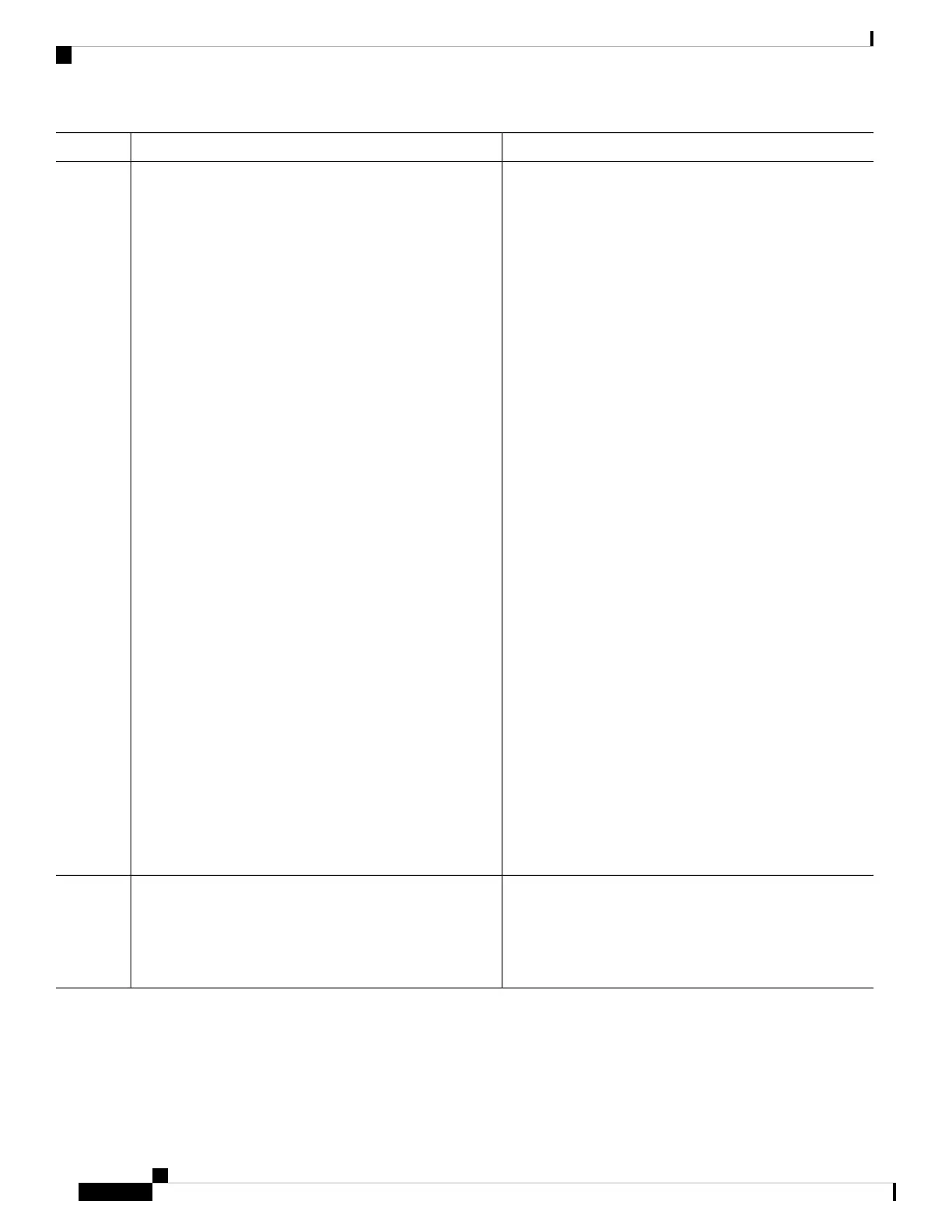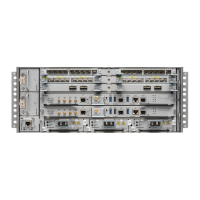PurposeCommand or Action
• Type 1: match destination-address {ipv4}
address/mask length
• Type 2: match source-address {ipv4}
address/mask length
• Type 3: match protocol {protocol-value
|min-value -max-value}
• Type 4: Create two class-maps: one with source-port
and another with destination-port:
• match source-port {source-port-value
|min-value -max-value}
• match destination-port
{destination-port-value |min-value
-max-value}
These are applicable only for TCP and
UDP protocols.
Note
• Type 5: match destination-port
{destination-port-value |[min-value - max-value]}
• Type 6: match source-port {source-port-value
|[min-value - max-value]}
• Type 7: match {ipv4}icmp-code {value
|min-value -max-value}
• Type 8: match{ipv4}icmp-type {value |min-value
-max-value}
• Type 9: match tcp-flag value bit-mask
mask_value
• Type 10: matchpacket length {packet-length-value
|min-value -max-value}}
• Type 11: match dscp {dscp-value |min-value
-max-value}
• Type 12: match fragment-type { is-fragment
}
• Type 13: match ipv4 flow-label {value
|min-value -max-value}
Ends the class map configuration and returns the router to
global configuration mode.
end-class-map
Example:
Step 4
RP/0/RP0/CPU0:router(config-cmap)# end-class-map
What to do next
Associate the class defined in this procedure to a PBR policy as described in Configure a Policy Map, on page
115.
Routing Configuration Guide for Cisco NCS 6000 Series Routers, IOS XR Release 6.4.x
114
Implementing BGP Flowspec
Configure a Class Map

